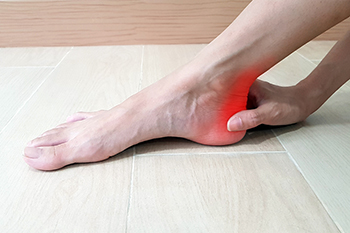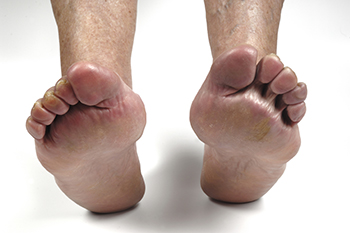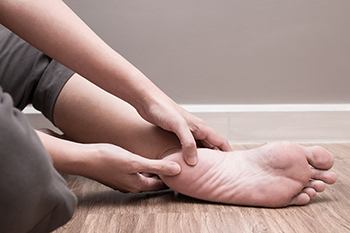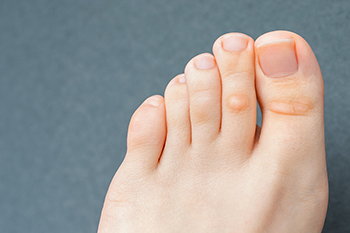Items filtered by date: December 2023
Managing Morning Pain in Achilles Tendon Injuries

Achilles tendon injuries can cast a shadow over the start of the day, with many individuals experiencing heightened discomfort in the morning. This specific pain is often a result of the tendon's response to a period of inactivity during sleep. As the body rests, the tendon may tighten, and upon resuming activity, the sudden stretching can induce pain and stiffness. This morning agony is a common symptom in conditions such as Achilles tendonitis or tendinosis, where the tendon undergoes repetitive stress or degeneration. It is essential to recognize the significance of a gradual warm-up routine before stepping out of bed, incorporating gentle stretches to prepare the Achilles tendon for the day ahead. Additionally, wearing supportive footwear and avoiding sudden, high-impact activities in the morning can contribute to managing and minimizing the discomfort associated with Achilles tendon injuries during those initial awakening moments. If you have endured this type of injury, it is suggested that you are under the care of a podiatrist who can guide you toward effective treatment and relief techniques.
Achilles tendon injuries need immediate attention to avoid future complications. If you have any concerns, contact one of our podiatrists of Itasca Foot & Ankle. Our doctors can provide the care you need to keep you pain-free and on your feet.
What Is the Achilles Tendon?
The Achilles tendon is a tendon that connects the lower leg muscles and calf to the heel of the foot. It is the strongest tendon in the human body and is essential for making movement possible. Because this tendon is such an integral part of the body, any injuries to it can create immense difficulties and should immediately be presented to a doctor.
What Are the Symptoms of an Achilles Tendon Injury?
There are various types of injuries that can affect the Achilles tendon. The two most common injuries are Achilles tendinitis and ruptures of the tendon.
Achilles Tendinitis Symptoms
- Inflammation
- Dull to severe pain
- Increased blood flow to the tendon
- Thickening of the tendon
Rupture Symptoms
- Extreme pain and swelling in the foot
- Total immobility
Treatment and Prevention
Achilles tendon injuries are diagnosed by a thorough physical evaluation, which can include an MRI. Treatment involves rest, physical therapy, and in some cases, surgery. However, various preventative measures can be taken to avoid these injuries, such as:
- Thorough stretching of the tendon before and after exercise
- Strengthening exercises like calf raises, squats, leg curls, leg extensions, leg raises, lunges, and leg presses
If you have any questions please feel free to contact our offices located in Itasca and Hoffman Estates, IL . We offer the newest diagnostic tools and technology to treat your foot and ankle needs.
Gout Pain Can Be Managed
Rheumatoid Arthritis and the Feet

Rheumatoid arthritis, also known as RA, is a disease that causes pain and problems in joints and other areas of the body. One common area it affects is the feet. When someone has RA, their feet can hurt, and they may have trouble moving them. RA can cause the joints to swell, and they may become damaged over time. In the beginning, the signs of RA can mimic a host of other joint problems. Getting RA diagnosed quickly is important, as treating it early can help prevent joint damage and make the disease easier to control. If you have pain in your foot or ankle joints, it is strongly suggested that you visit a podiatrist to have an evaluation, a proper diagnosis, and correct treatment started.
Because RA affects more than just your joints, including the joints in your feet and ankles, it is important to seek early diagnosis from your podiatrist if you feel like the pain in your feet might be caused by RA. For more information, contact one of our podiatrists of Itasca Foot & Ankle. Our doctors will assist you with all of your podiatric concerns.
What Is Rheumatoid Arthritis?
Rheumatoid Arthritis (RA) is an autoimmune disorder in which the body’s own immune system attacks the membranes surrounding the joints. Inflammation of the lining and eventually the destruction of the joint’s cartilage and bone occur, causing severe pain and immobility.
Rheumatoid Arthritis of the Feet
Although RA usually attacks multiple bones and joints throughout the entire body, almost 90 percent of cases result in pain in the foot or ankle area.
Symptoms
- Swelling and pain in the feet
- Stiffness in the feet
- Pain on the ball or sole of feet
- Joint shift and deformation
Diagnosis
Quick diagnosis of RA in the feet is important so that the podiatrist can treat the area effectively. Your doctor will ask you about your medical history, occupation, and lifestyle to determine the origin of the condition. Rheumatoid Factor tests help to determine if someone is affected by the disease.
If you have any questions please feel free to contact our offices located in Itasca and Hoffman Estates, IL . We offer the newest diagnostic and treatment technologies for all your foot and ankle needs.
Heel Pain Can Indicate a Type of Arthritis

Heel pain is a common complaint, often attributed to factors like wearing improper footwear or overuse. However, it may surprise you to learn that heel pain can also be a subtle signal of arthritis, specifically, ankylosing spondylitis, or AS. This chronic autoimmune condition primarily affects the spine, but it can also extend its reach to peripheral areas, including the heels. AS triggers heightened inflammation throughout the body’s joints and soft tissues, including peripheral joints like the heels, hips, shoulders, fingers, and toes. Heel pain emerges when the inflammatory response targets the heel or its supporting ligaments and tendons. Chronic back pain and spinal rigidity are classic AS symptoms, and may also cause discomfort in the heels. If left untreated, the pain can escalate, leading to severe stiffness and reduced mobility. The precise cause of AS remains unknown, but those with a family history of ankylosing spondylitis or with conditions like Crohn's disease, psoriasis, or ulcerative colitis, seem to be more susceptible. If you are experiencing persistent heel pain in addition to other symptoms, it is suggested that you schedule an appointment with a podiatrist to explore potential underlying causes, and create an effective treatment plan.
Many people suffer from bouts of heel pain. For more information, contact one of our podiatrists of Itasca Foot & Ankle. Our doctors can provide the care you need to keep you pain-free and on your feet.
Causes of Heel Pain
Heel pain is often associated with plantar fasciitis. The plantar fascia is a band of tissues that extends along the bottom of the foot. A rip or tear in this ligament can cause inflammation of the tissue.
Achilles tendonitis is another cause of heel pain. Inflammation of the Achilles tendon will cause pain from fractures and muscle tearing. Lack of flexibility is also another symptom.
Heel spurs are another cause of pain. When the tissues of the plantar fascia undergo a great deal of stress, it can lead to ligament separation from the heel bone, causing heel spurs.
Why Might Heel Pain Occur?
- Wearing ill-fitting shoes
- Wearing non-supportive shoes
- Weight change
- Excessive running
Treatments
Heel pain should be treated as soon as possible for immediate results. Keeping your feet in a stress-free environment will help. If you suffer from Achilles tendonitis or plantar fasciitis, applying ice will reduce the swelling. Stretching before an exercise like running will help the muscles. Using all these tips will help make heel pain a condition of the past.
If you have any questions please contact our offices located in Itasca and Hoffman Estates, IL . We offer the newest diagnostic and treatment technologies for all your foot and ankle needs.
What Are the Common Causes of Corns on the Feet?

Corns, those small, often painful patches of thickened skin, are a common foot woe with various underlying causes. One frequent instigator is wearing ill-fitting footwear, particularly shoes that squeeze or rub against certain areas of the foot, creating friction and pressure. High heels, narrow shoes, or those with inadequate cushioning can contribute to the development of corns. Structural abnormalities, such as bunions or hammertoes, alter the distribution of weight on the feet, leading to increased friction and corn formation. Repetitive actions or activities that place excessive pressure on specific areas of the feet can also trigger corns. Additionally, individuals with gait abnormalities may be more prone to developing corns due to altered foot mechanics. Understanding these common causes allows for proactive measures, such as choosing proper footwear and addressing structural issues. If you have developed a corn on your foot, it is suggested that you visit a podiatrist who can treat it accordingly and offer appropriate prevention techniques.
Corns can make walking very painful and should be treated immediately. If you have questions regarding your feet and ankles, contact one of our podiatrists of Itasca Foot & Ankle. Our doctors will treat your foot and ankle needs.
Corns: What Are They? And How Do You Get Rid of Them?
Corns are thickened areas on the skin that can become painful. They are caused by excessive pressure and friction on the skin. Corns press into the deeper layers of the skin and are usually round in shape.
Ways to Prevent Corns
There are many ways to get rid of painful corns such as:
- Wearing properly fitting shoes that have been measured by a professional
- Wearing shoes that are not sharply pointed or have high heels
- Wearing only shoes that offer support
Treating Corns
Although most corns slowly disappear when the friction or pressure stops, this isn’t always the case. Consult with your podiatrist to determine the best treatment option for your case of corns.
If you have any questions please feel free to contact our offices located in Itasca and Hoffman Estates, IL . We offer the newest diagnostic and treatment technologies for all your foot and ankle needs.
